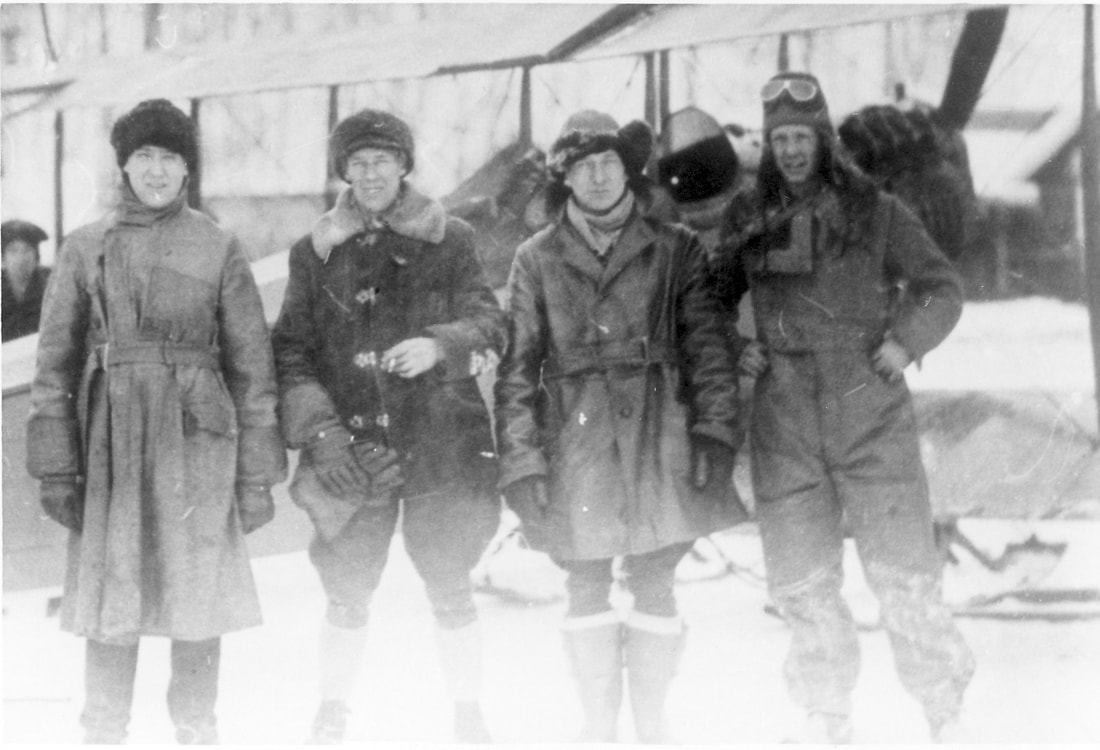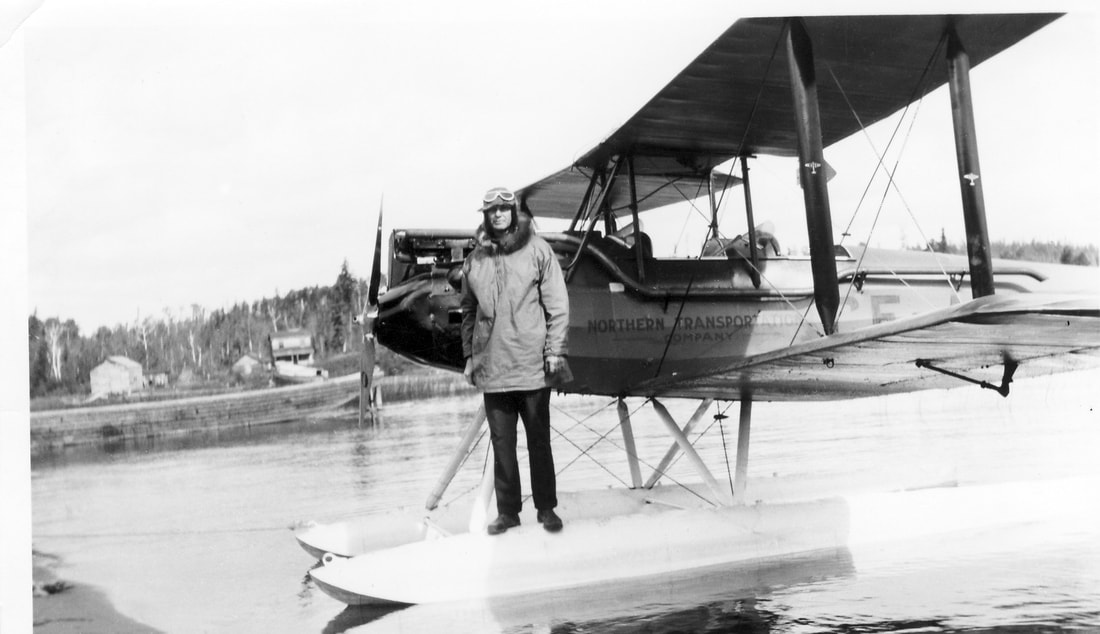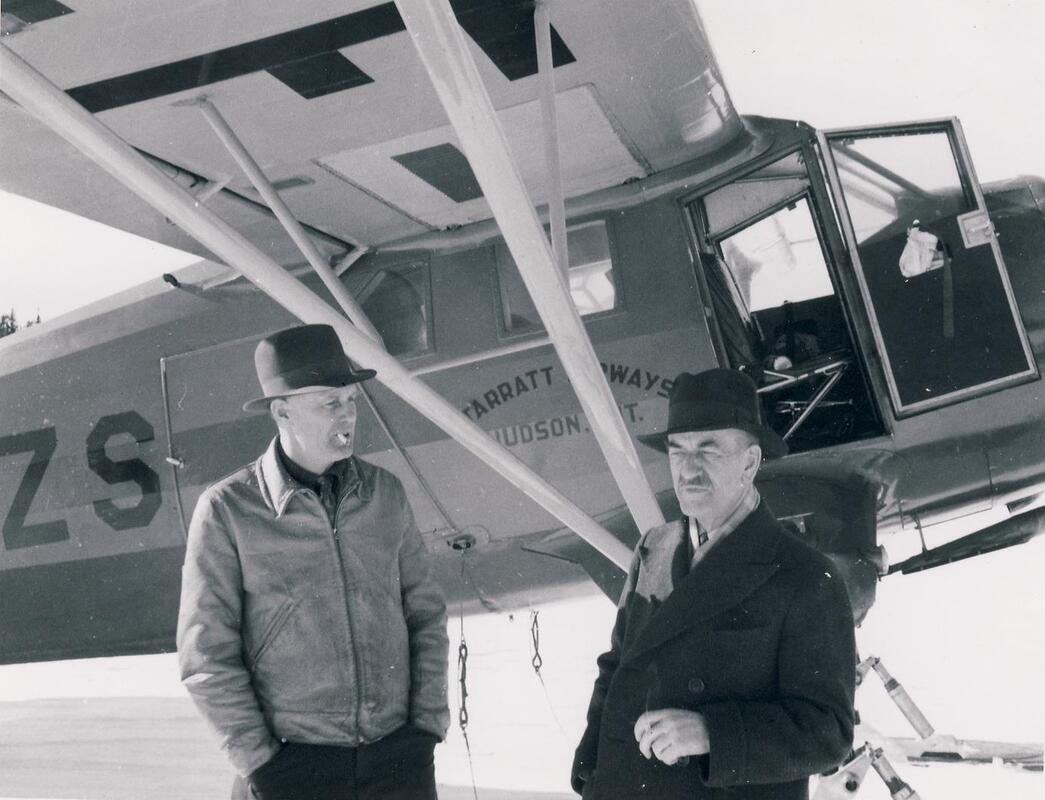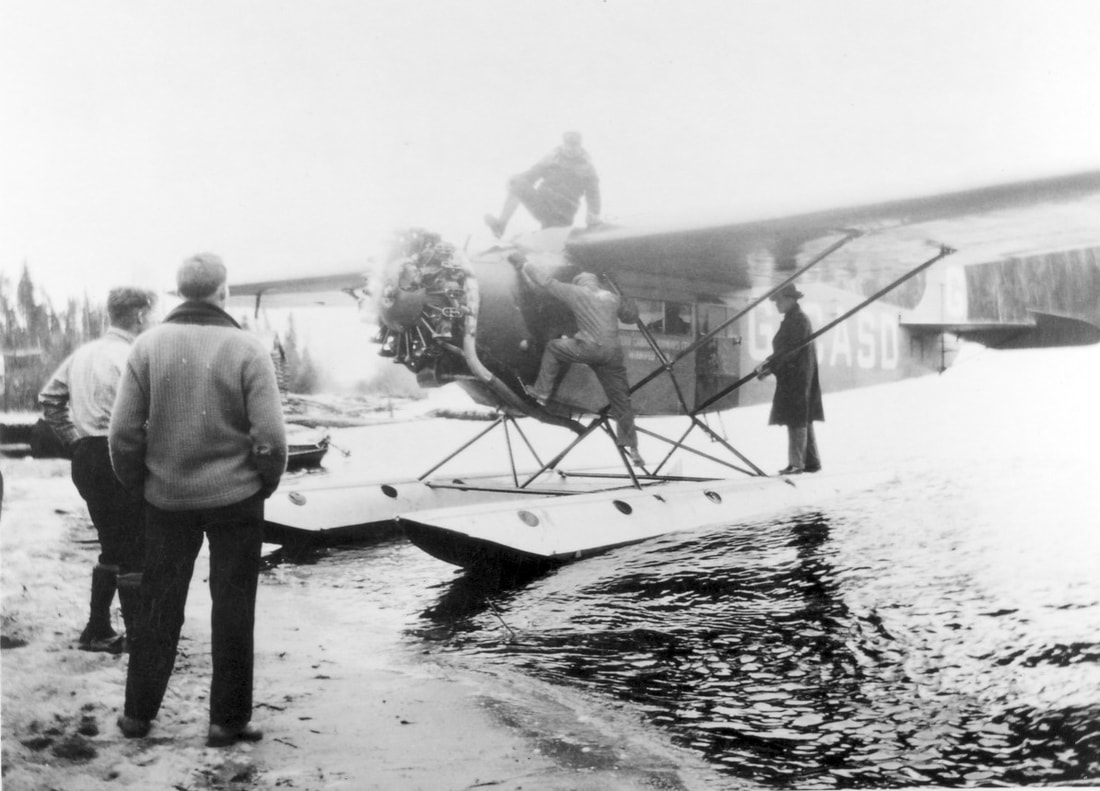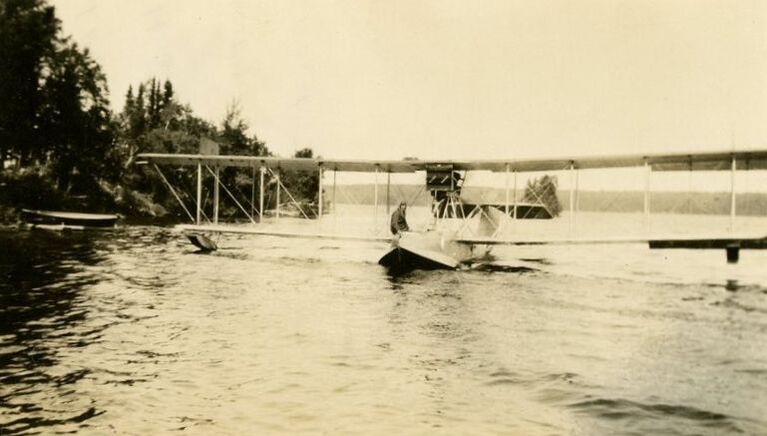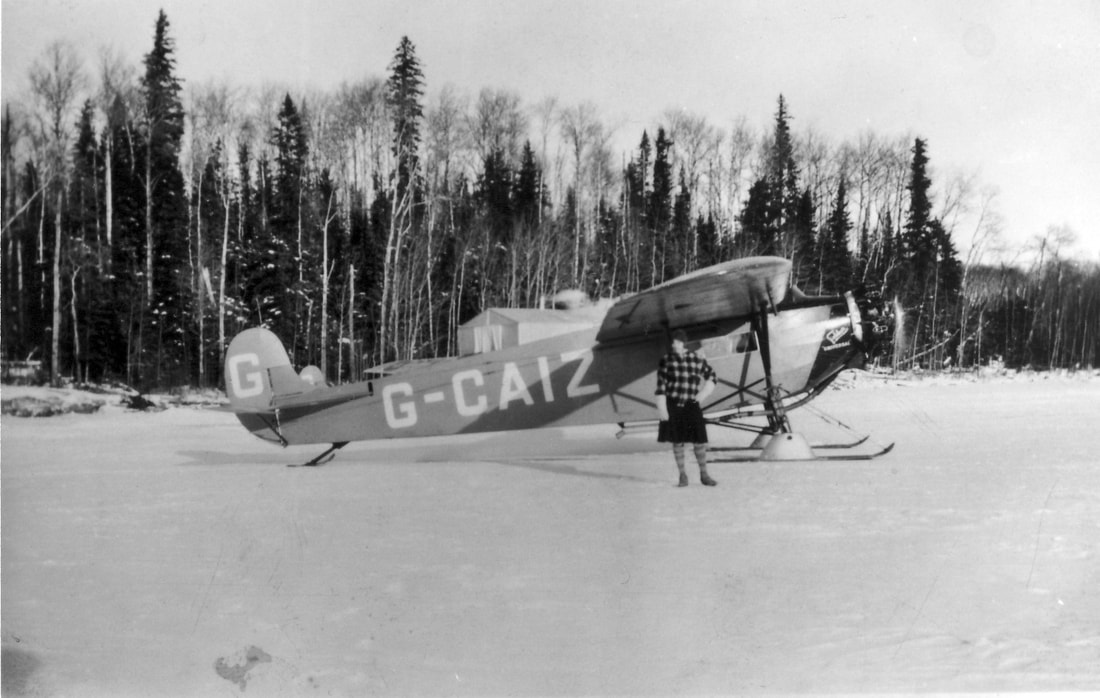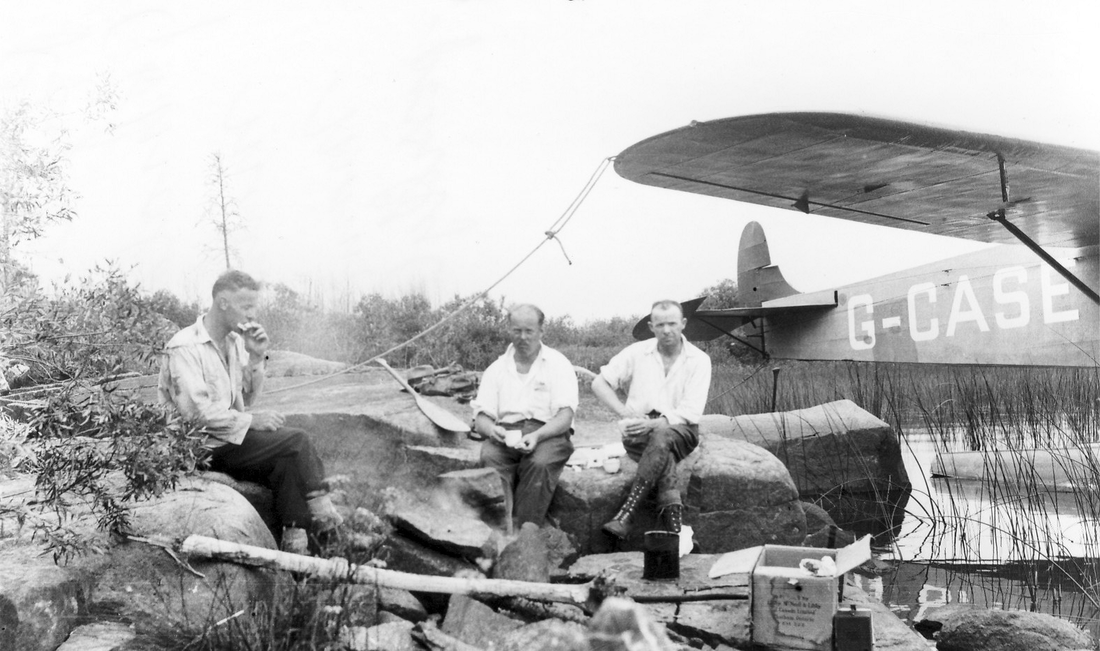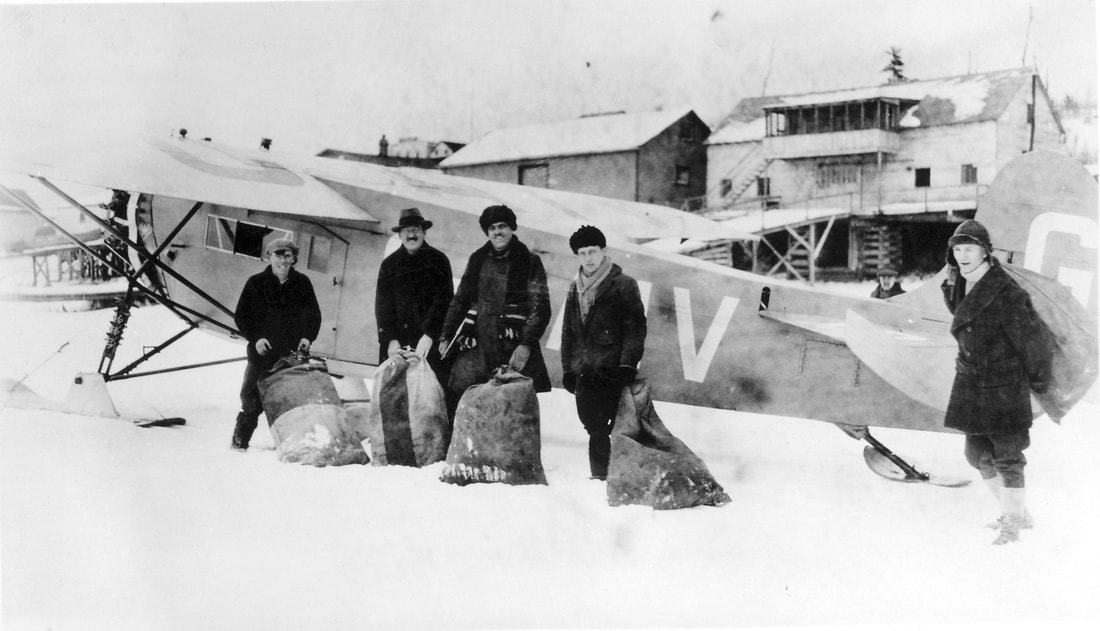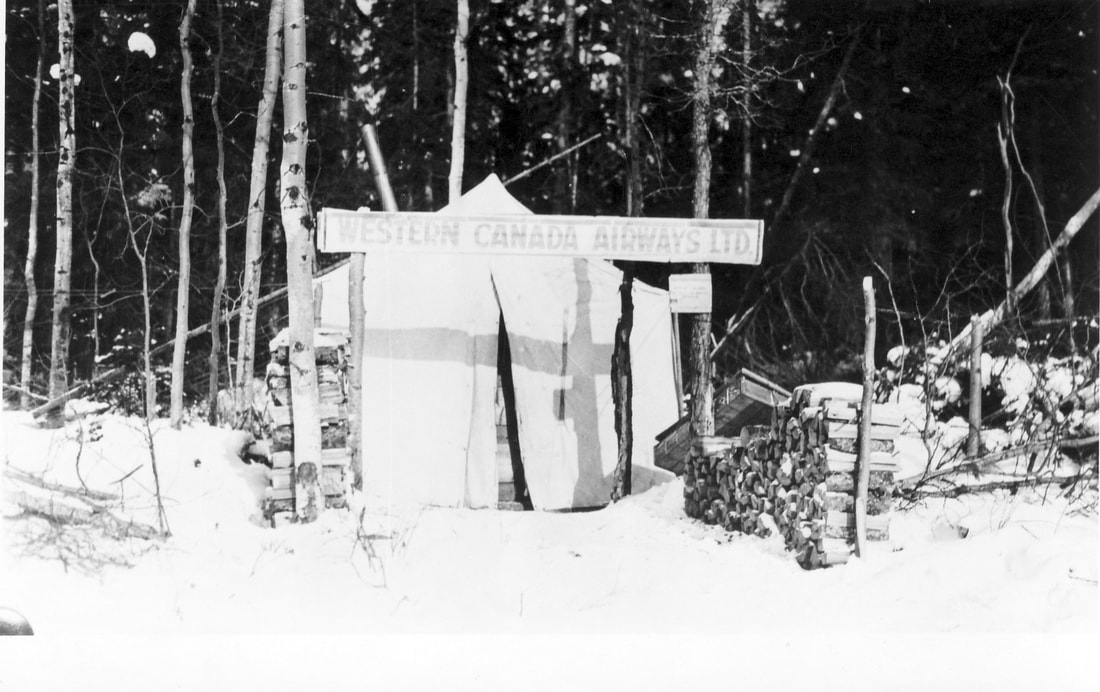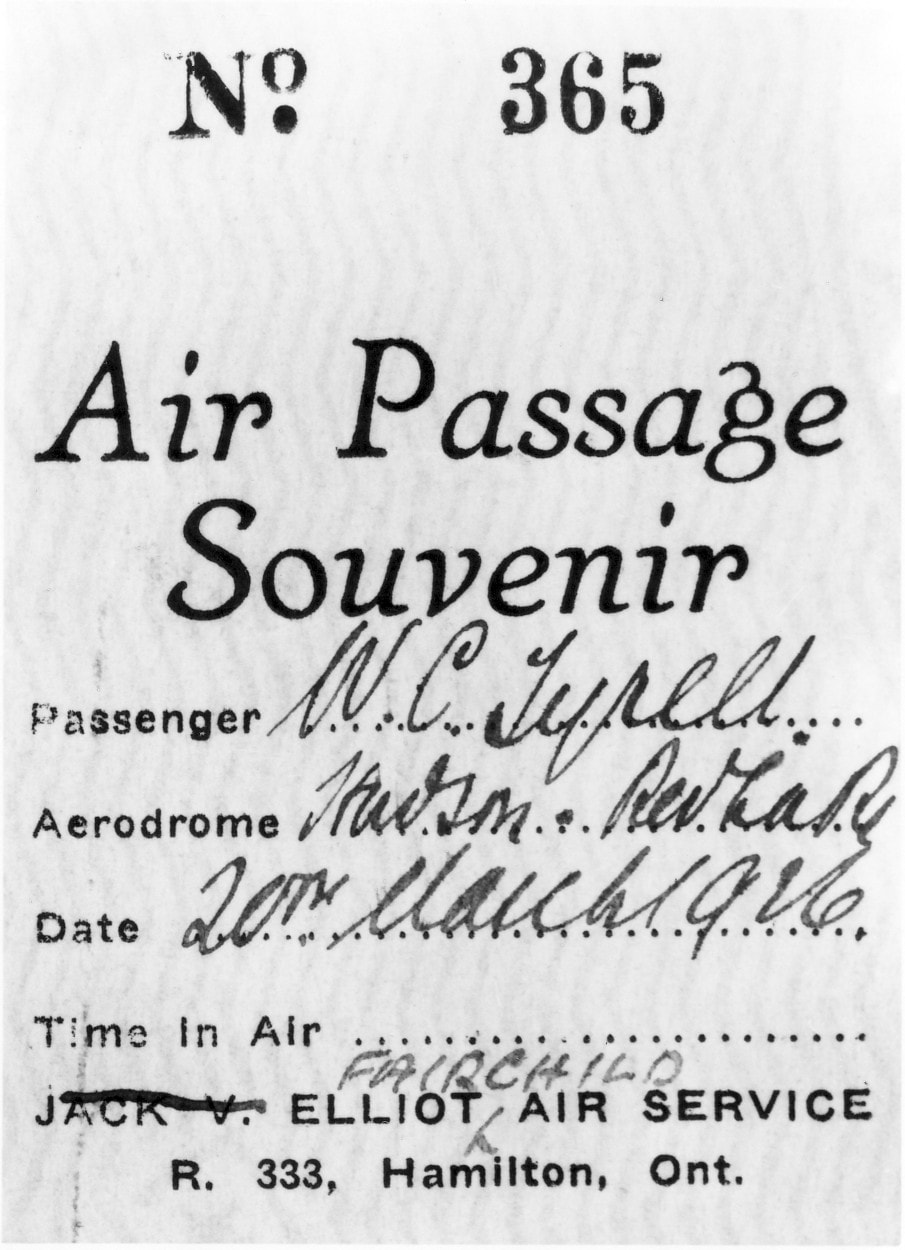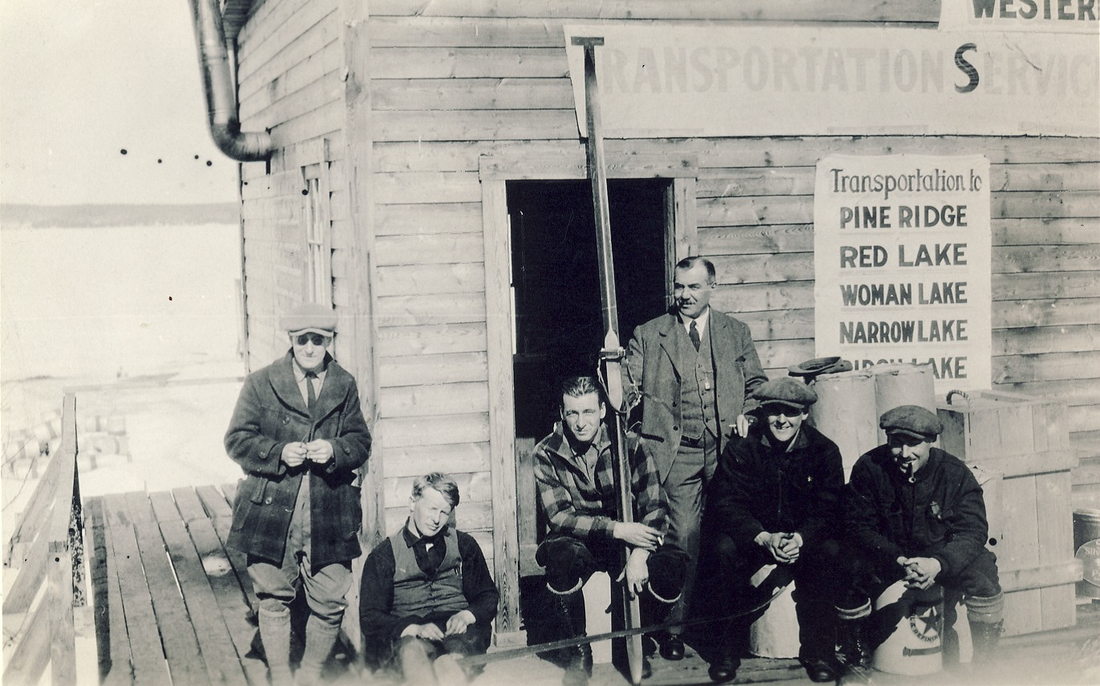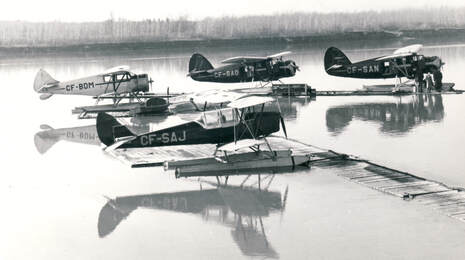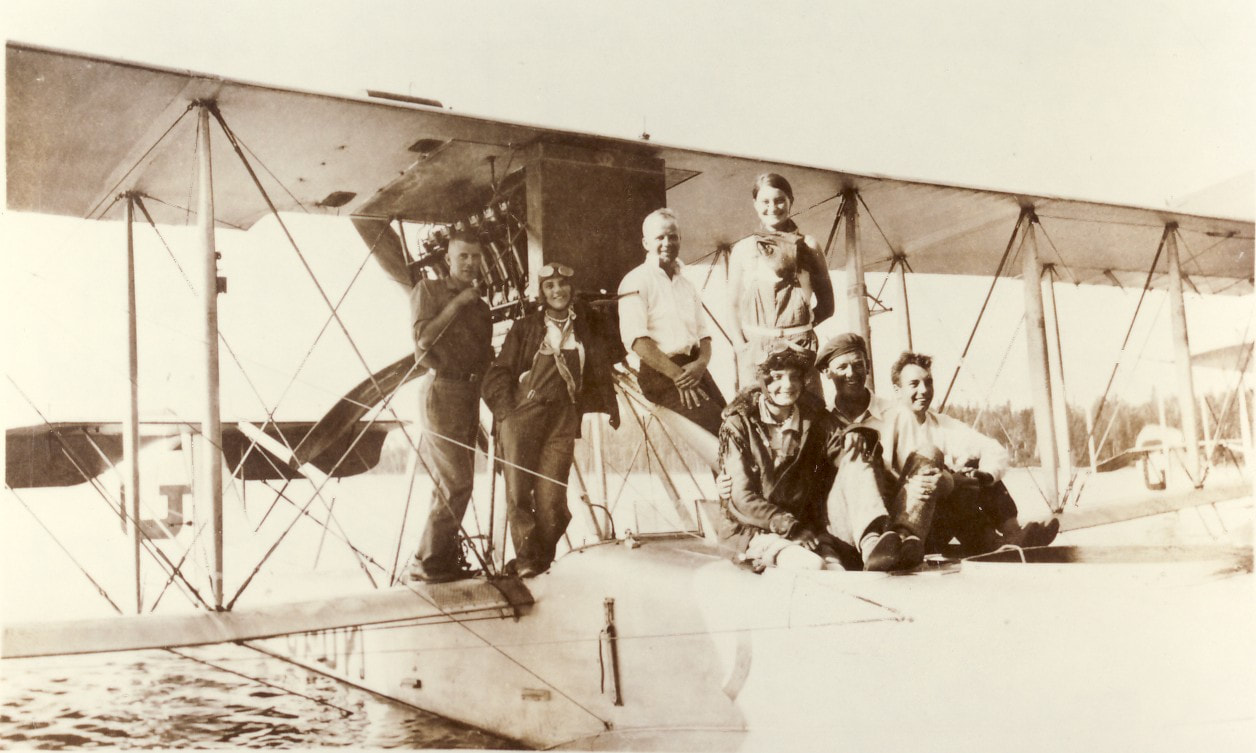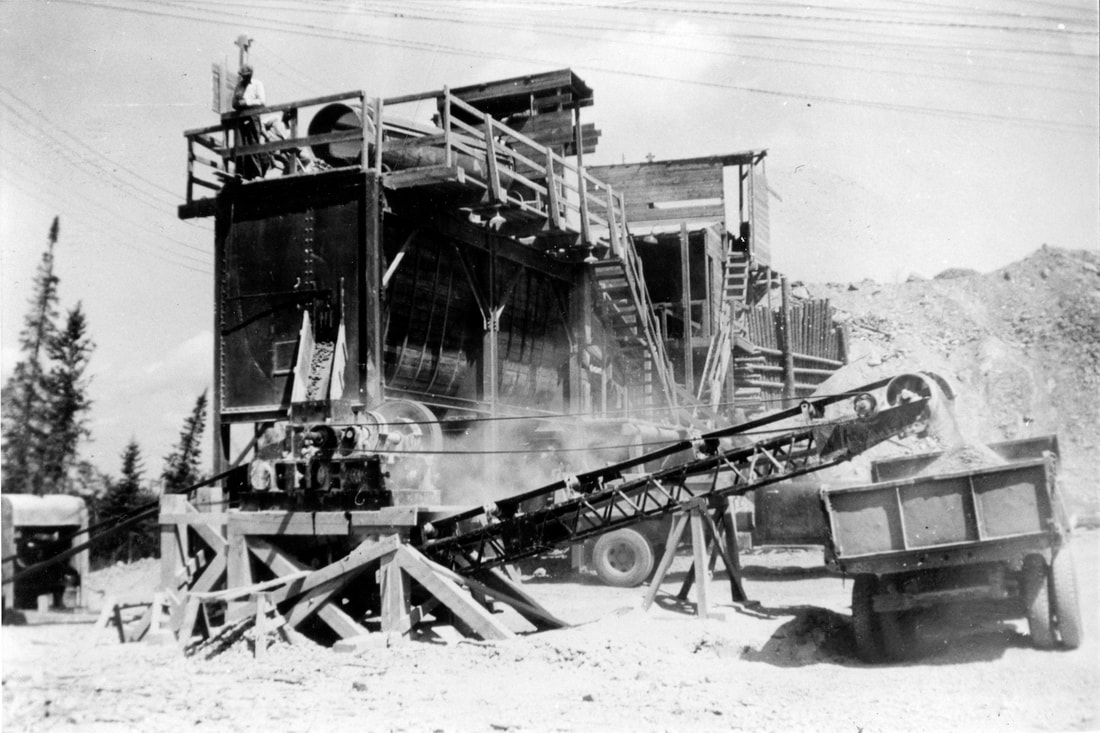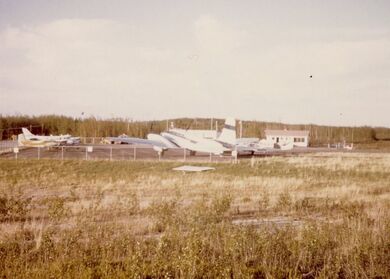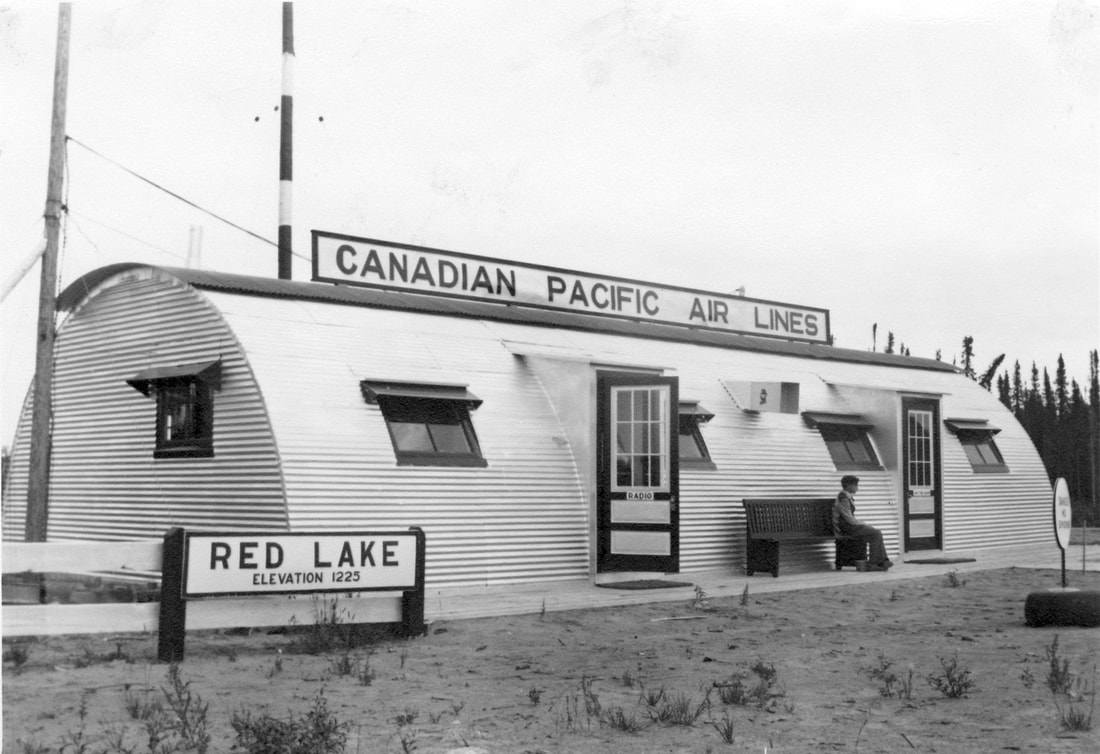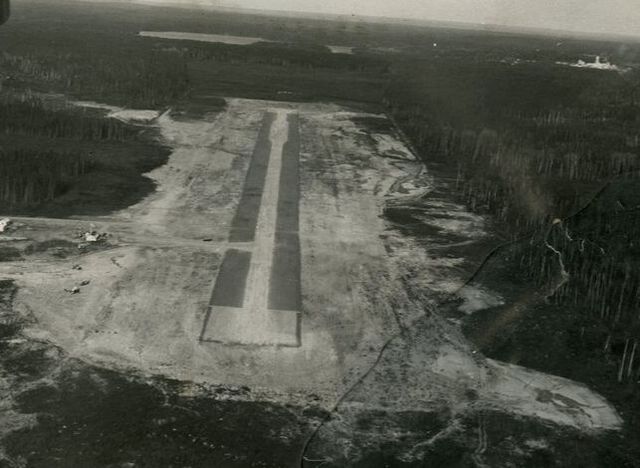Air Transportation
|
The first plane landing in Red Lake was by the Ontario
Provincial Air Service (OPAS). The Ontario government formed the OPAS in 1924 to patrol for forest fires. The OPAS had old HS2L flying boats, also known as H-boats, which were initially used in World War I. The planes were modified to carry passengers and equipment to fight fires. In 1924, Romeo Vachon, a well-known pilot, landed in Red Lake while on patrol for the OPAS. Not much is known about this, as he only landed in the area and there was no town at that time. In the summer of 1925, Lorne Howey, Ray Howey, George McNeely and W.F. Morgan discovered gold in Red Lake. After finding gold, Lorne Howey and George McNeely enlisted Jack Hammell, a mining promoter, to raise funds to explore the Howey claims further. Hammell wanted the exploration to start before winter set in. At the beginning of October, Hammell chartered 5 planes from the OPAS to carry in 7 men, 1 woman and 13607.8 kg (15 tonnes) of equipment and supplies to Red Lake. The charter cost was $1.50 per mile (1 mile = 1.60934 km, 93¢ per km). The planes could carry between 181- 272 kg (400-600 lbs). The planes flew from Minaki to Red Lake which was 120 km (75 miles) rather than the base in Sioux Lookout, which was 177 km (110 miles) from Red Lake. The contract was completed by the end of October and was one of the first air freighting contracts in Canada. In Hudson, Jack Elliot, Bill Hodgins, Harold Farrington & Howard Watt, JN4 'Jenny' ski-equipped airplane, March 1926
Bob Starratt and De Havilland
|
Starratt Airways based out of Hudson. Bob Starratt and Horace Young,
|
Air Services
G-CAIV FLEW IN FIRST AIR MAIL, 1926First Western Canada Airways
|
While the pilots would fly with air engineers, most pilots
were very knowledgeable about their planes and were able to repair them. Flying could be hazardous in the 1920s. There were no radios on the aircraft, so if the pilot was in trouble, lost or crashed, he needed to be able to repair his plane and survive until he could fly out or someone rescued him. The reporter William Scott also commented that on board were several sandwiches and snowshoes in case of a forced landing. Examples of other issues that could arise include losing a ski during takeoff, landing incorrectly or a tear in the canvas of the wings. The plane would need to be fixed or reinforced to get back into the air. Early pilots carried extra fuel as remote areas did not have fuel and they needed to have enough for the return trip. J.V. Elliot Ltd. was extremely busy flying passengers between Hudson and Red Lake. In Hudson, there were often lineups of 10 to 15 people waiting to fly to Red Lake. Some of these trips were round trips, while others were only one way. By March 15, 1926, the fare to Red Lake was lowered to $100 per passenger and 50¢ per pound (1 pound = 0.453592 kilograms, $1.10 per kg). With the success of J.V. Elliot Ltd., other air services started to form. All these early air services would compete for passengers, but they would always set this aside if another pilot were in trouble or if they found someone in distress on the trail. People could get injured on the trail or in Red Lake and need help or medical attention. The pilots would fly anyone in distress or injured without charging them. These flights were known as mercy flights and saved many lives in such an isolated area. Elliot Air Service, passage
|
Red Lake Airports
planes at dock, Date UNKNOWNGold Pines, Imperial Airways, 1929The Ontario Government recognized the severity of Red
Lake’s isolation and announced that a year-round airport with a landing strip would be built in the area. In 1946 construction of an airport began on the Martin-McNeeley property in Cochenour. A 1219 x 46-metre (4000 x 150-foot) gravel runway was built, and a Quonset shed was installed.On May 29, 1947, the airport opened and daily services by Canadian Pacific Airlines commenced to Winnipeg. Even though larger passenger and freight planes could now land in Red Lake, it was not until 1949 that Cochenour was connected to the other communities. The Red Lake Airport was a private airport until 1959 when the Department of Transport took over. The Department of Transport installed lighting and provided financial support. The Red Lake Airport opened a new terminal in June 1971, with provincial and federal representatives present. In 1993, the runway was extended to 1524 x 46 metres (5001 x 150 feet). The Township of Golden took over the operation of the Airport in 1996. In 1998, the townships amalgamated to form the Municipality of Red Lake, which took over operations. The Municipality continues to operate the airport today. Crusher at Airport, 1949Airport, 1965 |
Red Lake’s first airport was Howey Bay. Planes outfitted
with skis landed on the ice during the winter months. In summer, planes were fitted with pontoons, also known as floats, and would land on the open water. The pilots needed to be certified for each type of landing. Harold Farrington flew in passengers in March and April of 1926 but then had to go to Toronto to get certified to fly planes with floats. While not an airport in the modern sense, all the air services used Howey Bay as their base of operations, their tents lining the shores. In 1936, Howey Bay was the busiest airport in the world. In 1937, Red Lake had 50 percent more freight shipped to it than any other airport in the world. Red Lake was indeed a busy place where planes landing was an every day occurrence. Boaters on Red Lake needed to be aware in the summer and avoid the plane landing area. In winter, snow was cleared to make a runway takeoff and landing. Unfortunately, planes could not land during break-up and freeze-up when the ice is not strong enough to bear the weight of the aircraft. This left the Red Lake area wholly isolated from the outside world. AIRPORT
|

